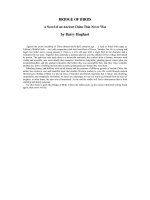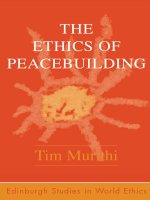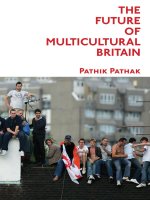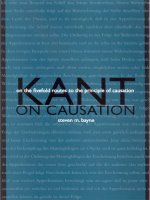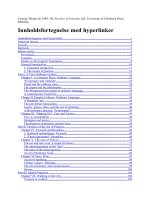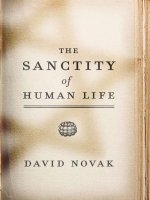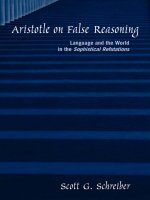university of texas press the teotihuacan trinity the sociopolitical structure of an ancient mesoamerican city dec 2007
Bạn đang xem bản rút gọn của tài liệu. Xem và tải ngay bản đầy đủ của tài liệu tại đây (7.22 MB, 227 trang )
the teotihuacan trinity
annabeth headrick
the teotihuacan trinity
the sociopolitical structure of
an ancient mesoamerican city
University of Texas Press Austin
Copyright © 2007 by the University of Texas Press
All rights reserved
Printed in the United States of America
First edition, 2007
Photographs not otherwise credited are courtesy of the
author.
Requests for permission to reproduce material from this
work should be sent to:
Permissions
University of Texas Press
P.O. Box 7819
Austin, TX 78713-7819
www.utexas.edu/utpress/about/bpermission.html
The paper used in this book meets the minimum
requirements of ansi/niso z39.481992 (r1997) (Perma-
nence of Paper).
library of congress cataloging-in-publication data
Headrick, Annabeth.
The Teotihuacan trinity : the sociopolitical structure of an
ancient Mesoamerican city / Annabeth Headrick. — 1st ed.
p. cm. — (William and Bettye Nowlin series)
Includes bibliographical references and index.
isbn 978-0-292-71665-0 (cloth : alk. paper)
1. Teotihuacán Site (San Juan Teotihuacán, Mexico)
2. Aztecs—Mexico—San Juan Teotihuacán—Politics
and government. 3. Aztecs—Mexico—San Juan
Teotihuacán—Rites and ceremonies. 4. Aztecs—
Mexico—San Juan Teotihuacán—Antiquities.
5. Excavations (Archaeology)—Mexico—San Juan
Teotihuacán. 6. San Juan Teotihuacán (Mexico)—
Antiquities. I. Title.
f1219.1.t27h43 2007
972—dc22
2007008231
For Kurt Otto (K.O.) Headrick
and all that you might have done
The mountains were his masters. They rimmed in
life. They were the cup of reality, beyond growth,
beyond struggle and death. They were his absolute
unity in the midst of eternal change.
thomas wolfe, look homeward, angel
contents List of Illustrations viii
Preface xi
chapter 1
Approaching the City
1
chapter 2
The Invisible Kings
23
chapter 3
Ancestral Foundations
44
chapter 4
Animals, Cannibals, and the Military
72
chapter 5
A Marriage of Convenience: The King and the Military
90
chapter 6
The Gods Did It: The Divine Sanction of Power
103
chapter 7
Teotihuacan Jihad
124
chapter 8
Fiesta Teotihuacan Style
146
chapter 9
Continuities and Power
165
Notes 171
Bibliography 181
Index 203
list of illustrations 1.1 View of the Moon Pyramid and Cerro
Gordo 2
1.2 Map of central Teotihuacan 3
1.3 View of the Sun Pyramid 4
1.4 Talud-tablero construction 4
1.5 Views of the Yayahuala and Tetitla
apartment compounds 5
1.6 Ceramically defined phases of
Teotihuacan 5
1.7 Map of central Mexico 7
1.8 Feathered Serpent Pyramid 8
1.9 Plan of the Sun Pyramid and its cave 9
1.10 Stela 16, Dos Pilas 11
1.11 A comparison of Teotihuacan and Maya
figural styles 11
1.12 Mural with a jaguar approaching a temple,
Tetitla 12
1.13 Detail showing random cropping of figures,
Atetelco 13
1.14 Mural of the mountain-tree and
approaching priests, Tepantitla 15
1.15 Mural of two figures approaching an altar,
Teopancaxco 16
1.16 Codex Nuttall illustration of Lord 8
Deer 17
1.17 Possible hieroglyphs, Tetitla 17
1.18 Mural with a hieroglyph accompanying the
figure, Techinantitla 17
1.19 The Las Colinas vessel 18
2.1 Mural including ‘‘tassel headdress–bird
claw’’ hieroglyph, Techinantitla 25
2.2 Hieroglyphs, Plaza of the Glyphs, La
Ventilla 26
2.3 Detail of the Water Talud mural,
Tepantitla 27
2.4 The White Patio, Atetelco 28
2.5 Incised Olmec tablet 29
2.6 Details of K’inich Janaab’ Pakal I’s
sarcophagus lid, Palenque 29
2.7 Details of Portico 2 mural, Tepantitla 30
2.8 Possible image of a ruler from the Portico 2
mural, Atetelco 31
2.9 Zapotec ruler with a staff, Stela 1, Monte
Albán 31
2.10 Possible sculpture of a Teotihuacan ruler,
West Plaza Complex 32
2.11 Mural of a possible deceased ruler,
Tetitla 32
2.12 Colossal Museo Nacional sculpture 34
2.13 Map of Teotihuacan, 1842, by Brantz
Mayer 35
2.14 Drawing of Teotihuacan, 1897, by W. H.
Holmes 36
2.15 Aztec standard bearers, Tenochtitlan 37
2.16 Teotihuacan figurines with chest disks 38
2.17 Damaged sculpture in the Plaza of the
Moon 39
2.18 Colossus of Coatlinchan 40
3.1 Altar in the Tetitla principal patio 45
3.2 Copy of the Portico 2 mural, Tepantitla 50
3.3 Reconstruction of a Mixtec mortuary
bundle 52
3.4 Lord 3 Skull’s mortuary bundle, Codex
Selden 52
3.5 Stela 40, Piedras Negras 53
3.6 Stela from Tomb 5, Cerro de la
Campana 53
3.7 Mural of a mortuary bundle, Las
Higueras 54
3.8 Serpentine mask 55
3.9 Ceramic effigy bundle with removable
mask 56
3.10 Enthroned figurine 57
3.11 Half-conical figurine 57
3.12 Temple of Agriculture mural 58
3.13 Lord 3 Lizard’s mortuary bundle, Codex
Nuttall 60
3.14 Huitzilopochtli carried on migration,
Codex Boturini 61
3.15 Mortuary bundle of Lord 8 Deer, Codex
Bodley 62
3.16 Map of Teotihuacan, Relación geográfica 62
3.17 Bowl with mortuary bundle decoration 63
3.18 Mortuary bundles of 12 Vulture and 12
Lizard, Codex Bodley 65
3.19 Huitzilopochtli’s mortuary bundle, Codex
Boturini 65
3.20 View of the west side of the Avenue of the
Dead 65
4.1 Mural of warrior, atlatl darts, and sacrificial
blade, Atetelco 73
4.2 Mural detail with canine warrior,
Atetelco 74
4.3 Plaque with warrior and feathered serpent
headdress 74
4.4 Drawing of the Altar de Sacrificios vase 75
4.5 Illustration of Aztec counterattack at
Tenochtitlan, The History of the Indies of
New Spain 76
4.6 Olmec figure of a shaman in partial
transformation 77
4.7 Olmec figure of fully transformed
shaman 77
4.8 Mural depicting a jaguar warrior,
Zacuala 78
4.9 Mural detail of warrior striking a bird,
Atetelco 78
4.10 Fully transformed bird warrior,
Atetelco 80
4.11 Photograph and drawing of canines and a
net jaguar eating hearts, Atetelco 81
4.12 Mural with canine in a bowl, Atetelco 82
4.13 Biznaga mural, Atetelco 82
4.14 Zone 2 mural with feline-dressed
figures 82
4.15 Mural of canines attacking a deer 83
4.16 Thin Orange vessel with pierced tri-scroll
heart 84
4.17 Mural with bird warriors, Atetelco 87
4.18 Mural with procession of bird-costumed
figures, Zone 5-A 88
5.1 Illustration of Aztec warrior costumes
given in tribute, Codex Mendoza 92
5.2 Feathered serpents and war serpent
headdresses, Feathered Serpent
Pyramid 94
5.3 View of the adosada, Feathered Serpent
Pyramid 94
5.4 Serpent and jaguar balustrades, West Plaza
Complex 95
5.5 Reconstruction of the White Patio,
Atetelco 96
5.6 Artist’s reconstruction of the Portico 25
murals, Tetitla 97
6.1 Residential structures and furrows,
Tetimpa 104
6
.2 Plan of the White Patio three-temple
complex, Atetelco 106
6.3 Plaza One, a three-temple complex 106
list of illustrations ix
6.4 The Sun Pyramid and Moon Pyramid as
three-temple complexes 107
6.5 The West Plaza Complex 108
6.6 The Superimposed Buildings Compound
and the Northwest Compound 109
6.7 Plans of the Tetitla and Zacuala Palace
apartment compounds with their
four-temple complexes 109
6.8 Four-temple complexes at the Painted
Patio, Atetleco, and Yayahuala 110
6.9 The Humboldt Celt 111
6.10 Illustration of turtle with three stones,
Codex Madrid 111
6.11 Three stones under the world tree, Codex
Selden 112
6.12 Three-mountain motif 113
6.13 View of the Sun Pyramid and Cerro
Patlachique 115
6.14 View from the Sun Pyramid of Cerro
Colorado and Cerro Malinalco 116
6.15 Pecked cross from Cerro Gordo 117
6.16 Old Fire God brazier 118
6.17 Door jamb murals with eagle and jaguar
warriors, Cacaxtla 120
6.18 Opposing murals with a blue frog and a
jaguar frog, Cacaxtla 121
7.1 Frescoed bowl with butterfly 126
7.2 Mural fragment of Tlaloc with atlatl dart,
Tetitla 127
7.3 Mural fragment of Tlaloc mouth on a
butterfly, Zone 5-A 127
7.4 Drawing of Stela 31 sides, Tikal 128
7.5 Comparison of butterfly eyes and antennae
with an atlatl 129
7.6 Comparison of butterfly antennae and atlatl
darts 130
7.7 Butterfly warrior with shield on frescoed
vase 130
7.8 Butterfly-bird warrior on frescoed
vase 130
7.9 Vase containing bird and butterfly
elements 131
7.10 Avian butterfly from relief-decorated
vessel 131
7.11 Censer with butterfly motifs 132
7.12 Vase with a noseplaque and butterfly
wings 133
7.13 Vase with butterfly head above a
noseplaque 134
7.14 Temple depictions 134
7.15 Lintel 25, Yaxchilan 137
7.16 Censer mask with butterfly noseplaque
and skulls 138
7.17 Tripod vases decorated with the year
sign 138
7.18 Illustration of the birth tree of Apoala,
Codex Vindobonensis 143
8.1 Olmec ruler raising a staff, Monument 1,
San Martín Pajapan 148
8.2 World tree on the Tablet of the Cross,
Palenque 149
8.3 Aztec Tota festival, Book of the Gods and
Rites 151
8.4 Aztec Xocotl rituals, Primeros
memoriales 152
8.5 Pole-climbing ceremony, Codex
Magliabecchiano 153
8.6 Butterflies with human celebrants, Water
Talud mural, Tepantitla 155
8.7 Sacrificial victim, Water Talud mural,
Tepantitla 155
8.8 Centipede dance, Water Talud mural,
Tepantitla 156
8.9 Various games, Water Talud mural,
Tepantitla 156
8.10 Tree emerging from a supernatural being,
Codex Borgia 157
8.11 Tree emerging from a goddess on the
Teocalli, Tenochtitlan 157
8.12 Southerly view of the Plaza of the
Moon 159
8.13 Plan of the Building of the Altars 160
8.14 Calendrical page of the Codex
Féjérvary-Mayer 161
x the teotihuacan trinity
preface On my first visit to Teotihuacan I was wholly
unimpressed. Though this thought now causes
me much chagrin, at the time I had been seduced
by the florid art and tree-sheltered architecture
of the Maya. In fact, my initial view of the city
was through the small window of a camper on a
pickup truck while making my way home from
excavations in Belize. Through this small win-
dow, the incredible size of Teotihuacan’s pyra-
mids initially elicited some degree of awe, but
as I walked the main avenue, the city struck me
as charmless and brash. The architecture’s repeti-
tive nature and oppressive scale seemed to have
none of the finesse of Maya cities. The traces of
painting on the surfaces of the walls certainly
intrigued me, but the comparative absence of
sculpture disturbed my then Maya-centric mind.
Teotihuacan appeared to me like a large hulking
gorilla devoid of any grace.
My rehabilitation began during another field
season in the Maya area. Dolf Widmer engaged
me in a series of conversations that summer and
pressed me to define the topic of my disserta-
tion. At the time the Terminal Classic city of
Chichen Itza was the leading candidate, but then
Dolf threw down a gauntlet I could not ignore.
He questioned how I could work on the Termi-
nal Classic when I had no deep understanding
of Classic period Teotihuacan, the city whose
collapse had so radically transformed the Meso-
america that followed. Gradually, I became per-
suaded, and I set my sights on Teotihuacan. Thus,
ironically, I began working on one of the largest
preindustrial cities in the world not for a love of
the city itself, but as an exercise to better com-
prehend a radically smaller and decidedly more
short-lived city to the south.
The transformation in my attitude towards
Teotihuacan could not be more complete, for
now I fully appreciate the strategies behind the
scale that at first so oppressed me. Likewise,
I have spent considerably more time moving
through the maze of side streets, exploring the
copious murals and losing my longing for a
sculptural emphasis. I now have a passion for the
city and extol the cunning agendas crystallized in
the painted facades. Teotihuacan is a remarkable
place that can be aptly described as unique.
Although Dolf was the pivotal force that
pointed me in this direction, he is only one of
many who have accompanied me on this jour-
ney. I am eternally grateful that a community
of supportive individuals typifies Mesoamerican
research. Kent Flannery (1976b:2–3) best char-
acterized the devotion of Mesoamericanists to
their craft when he painted a vivid picture of
an archaeologist easily goaded into throwing his
sherds on a table for discussion. While Flannery’s
hypothetical ‘‘Real Mesoamerican Archaeolo-
gist’’ was meant as a scathing critique of research
methodology, he nonetheless described a colle-
giality that epitomizes this field. This spirit of
openly sharing information has astounded me
through the years.
Chief among those willing to share their
knowledge is George Cowgill, one of the most
engaged and responsive people in the field of
Mesoamerican research. Any inquiry to George is
invariably met with a response, and his intellec-
tual rigor and intricate knowledge of Teotihua-
can is amply matched by his generous assistance.
He has read numerous versions of this text, and
though I diverge from his guidance with some
proposals, this book is more accurate and com-
plex because of the dialogue we have shared.
George Cowgill also orchestrated my introduc-
tion to the larger world of Teotihuacan scholars.
During my research, he opened the doors and
resources of the Teotihuacan Mapping Project
facilities, where I met many colleagues who con-
tributed to my work. Included in this group are
Saburo Sugiyama, Kim Jilote, Alejandro Sarabia,
Ian Robertson, Oralia Cabrera, Cynthia Conides,
and Warren Barbour. Rubén Cabrera Castro de-
serves special acknowledgment: he freely shared
unpublished materials with me, facilitated visits
to newly excavated locations, and provided criti-
cal insight as we visited and walked together
through the city’s remains.
The impact that Linda Schele has made on my
life is inestimable. Her joyous infatuation with
Mesoamerica was contagious, and it was Linda
who first introduced me into the community
of Mesoamerican scholars. Linda contributed
to this sense of community by encouraging her
students to work collectively but also recogniz-
ing each of us as a contributing specialist. Linda
not only provided the foundation of knowl-
edge, but also crafted an environment where I
could learn from those around me as we evolved
from fellow students to colleagues. These include
Kent Reilly, Rex Koontz, Heather Orr, Khris-
taan Villela, Matthew Looper, Julia Guernsey,
and those who went before me, Andrea Stone
and Dorie Reents-Budet. Two others, Marilyn
Masson and Kathryn Reese-Taylor, have been in-
valuable through the years by inviting me into
the field of anthropology, as have David Freidel,
Karl Taube, Patricia McAnany, Art Joyce, Rebecca
Storey, and John Clark. Likewise, my colleagues
in the Vanderbilt Anthropology Department—
significantly John Janusek and Edward Fischer—
have tirelessly fielded my anthropological in-
quiries and pushed my interpretations through
intellectual debate. My students, both graduate
and undergraduate, have also been a remarkable
resource. On countless occasions a provocative
question or downright challenge has caused me
to view the material in a new light. In particular,
Virginia Walker deserves special thanks for her
dedicated work as my research assistant.
Financial support for the initial research came
from a University of Texas Continuing Uni-
versity Fellowship, and the Foundation for the
Advancement of Mesoamerican Studies, Inc.,
provided funds for further research and the pro-
duction of illustrations for this book. As any
art historian knows, obtaining the illustrations
for a text can be more onerous than any other
task, and I am deeply indebted to artists Jenni
Bongard, L. F. (Guicho) Luin, Mareike Sattler,
and Christopher Wray. Their attention to detail
and tremendous flexibility made this book pos-
sible. Kirvin Hodges deserves great credit for
assistance with digitization and production of
images, and I also thank Susan Toby Evans, Esther
Pasztory, Miriam Doutriaux of Dumbarton Oaks,
and Sylvia Perrine of famsi for their help with
information and illustrations at the critical con-
xii the teotihuacan trinity
clusion of this project. In addition, I am indebted
to the many editors of the University of Texas
Press, including Theresa May, Allison Faust, and
freelancer Alexis Mills, who have provided a
nurturing environment and countless hours of
assistance. Upon every request, they have been
wonderfully accommodating.
My intellectual foundations were definitely
built upon the fertile and solid ground that my
family has prepared and maintained. My parents
not only embraced my research, but directed me
towards this path. Their travels in the Maya area
and insistence that I take ‘‘just one’’ course with
Linda Schele exemplify a parent’s responsibility
to expose their children to new experiences. My
dear, beloved husband, Ross, has made all things
possible. He is an equal partner and loving father
who daily offers his own precious time and emo-
tional support so that I can be both scholar and
mother. Finally, there are my own ‘‘Hero Twins,’’
Otto and Ballard, who have been so good about
sharing their mommy with this thing called
Mesoamerica. There is nothing more rejuve-
nating than coming home to the hugs of warm
little boys.
preface xiii
THIS PAGE INTENTIONALLY LEFT BLANK
the teotihuacan trinity
THIS PAGE INTENTIONALLY LEFT BLANK
chapter 1
approaching
the city
Whether it be a.d. 400 or today in the twenty-
first century, the Avenue of the Dead profoundly
overwhelms any visitor to the ancient Mexican
city of Teotihuacan. In an almost indescribable
manner this broad street orchestrates the space
around it, incorporating the visitor into the
careful integration of architecture and natural
landscape (Figure 1.1). The avenue once stretched
for three miles, a singularly long, straight route
to the very heart of the city center. Large plat-
forms, once capped by towering temples, still
line the avenue, dwarfing the visitor and pro-
moting a message of individual human insig-
nificance. Yet it is not simply the scale that so
influences the visitor, but the manner in which
the design of the street seems to literally pull you
forward, enticing you into the web of the city of
Teotihuacan.
The avenue does this by capitalizing on the
natural environment that surrounds the city.
At the north end of the Teotihuacan Valley sits
Cerro Gordo, an extinct volcano with a cleft at
its summit. The massive mountain imposes itself
upon the landscape, and those who designed
Teotihuacan recognized this and incorporated its
bulk into the city planning. They positioned the
avenue on a north-south axis so that the street
ran directly toward the colossal mountain. The
preferred manner of entering Teotihuacan had to
be from the south where the full splendor of the
city stretched out before the visitor. As you walk
up the avenue from the south, the dominant feel-
ing is one of being drawn toward the mountain,
for it looms in the distance like a treasured goal.
The sensation is much like the experience of
entering a medieval cathedral where the halo of
stained glass behind the altar moves the visitor
from the back of a dark, deep building toward
the light at the other end. For the visitor walking
figure 1.1. View looking north up the Avenue of the Dead towards the Moon
Pyramid and Cerro Gordo, Teotihuacan.
up the avenue at Teotihuacan, the allure of Cerro
Gordo is simply all powerful; it manipulates your
actions and shapes your experience.
The Teotihuacanos further enhanced the effect
of the natural landscape by artfully positioning
their architecture. Directly in front of the moun-
tain, they built the large Moon Pyramid, which
echoes the shape of Cerro Gordo. If the singular
bulk of Cerro Gordo were not enough to dictate
its centrality, the pyramid serves as a not so subtle
reminder. The attraction of the natural moun-
tain and its manmade counterpart is additionally
heightened by the surrounding architecture,
which skillfully channels visitors onto a unidi-
rectional path, making it seem as if there is only
one route to pursue. As you walk from south to
north, a series of architectural facades lines the
northern half of the avenue, creating walls that
effectively contain the visitor. Like the blinders
on a racehorse, the architectural walls dictate a
concerted focus on Cerro Gordo at the end of
the avenue.
The sensation of containment is further am-
plified by the manner in which the Avenue of the
Dead was built. Although the overall effect is of
one long road stretching forward, in actual fact,
a number of enclosed courtyards punctuate the
street. Periodically as one walks up the avenue, a
set of stairs blocks the route, forcing the traveler
to climb up the stairs, cross over a moderately
wide platform, and subsequently descend another
set of stairs on the other side. The steps deposit
the visitor into courtyards which sometimes
have a large structure at their center, forcing one
off a central path in order to circumnavigate it.
Furthermore, these courtyards work in tandem
with another feature of the avenue. The walk is
not only a directional one, but a vertical climb
as well. The southern section of the Avenue of
the Dead is lower in elevation than the north-
ern portion, which not only enhances the visual
prominence of the Moon Pyramid and Cerro
Gordo, but also means that the visitor constantly
moves uphill. In concert with the courtyards, the
effect is, for the modern visitor, somewhat like
going through a set of locks, where each court-
yard raises the pedestrian one more level. The
walk up the avenue constantly takes one closer to
more elevated and sacred ground.
Although the Moon Pyramid and the moun-
tain of Cerro Gordo serve as the focal point of
the walk, the architecture lining the Avenue of
the Dead greatly contributes to the whole majes-
tic effect. To the south one passes the imposing
walls of the Ciudadela, an enclosed compound
where the rulers of Teotihuacan may have lived
(Figures 1.2, 1.4b). Smaller, yet still prominent
temples once ringed the walls of the Ciudadela,
and a broad, grand staircase led from the ave-
nue to the inner compound, both serving as
unmistakable markers of the structure’s regal im-
portance. Inside this compound is a vast plaza
that may have been large enough to hold the
entire adult population of Teotihuacan, and to
the rear of the plaza is the stunning Pyramid of
the Feathered Serpent (Cowgill 1983:322). Richly
decorated with elaborately carved stone imagery
that inspired its current name, the temple has
domestic structures on either side that may have
served as the royal habitation (Cabrera et al.
1989:52; Cowgill 1983, 1996:267, 1997:151–152;
Pasztory 1993:50–51). Across the street was an-
other immense enclosure called the Great Com-
pound. Formed by two enormous low platforms,
the unencumbered open space at its center may
have been the location of the city’s main market,
a place where vendors could display their wares.
1
Progressing ever closer to the Moon Pyra-
mid, one eventually arrives at another enclosed
compound accessed by a set of grand stairs. Yet
there is no surprise as to what lies beyond, for
the massive volume of the city’s largest pyramid,
the Sun Pyramid, protrudes over walls that do
2 the teotihuacan trinity
figure 1.2. Map of central Teotihuacan. Copyright © 1972, 1991, René Millon; courtesy of René Millon.
Tablero
Talud
a.
b.
figure 1.4. Talud-tablero: a) drawing showing its
construction; b) view of talud-tablero architecture on the
Ciudadela along the Avenue of the Dead, Teotihuacan. Drawing
by Jenni Bongard after Matos and López 1993:Figure 3.
figure 1.3.View of the Sun Pyramid, Teotihuacan.
little to contain it (Figure 1.3).
2
In an interesting
paradoxical twist, the Sun Pyramid may be the
oldest site of religious pilgrimage at Teotihuacan,
and its size certainly makes it one of the city’s
most prominent features; however, the Moon
Pyramid’s position on the avenue still designates
it as the terminus of the journey.
3
Although the
Moon Pyramid is smaller, its integration with
Cerro Gordo results in a visual arrangement that
manages to de-emphasize even the massive Sun
Pyramid.
While the larger structures initially capture
one’s attention, the splendor of the city did not
rest solely with the main pyramids. The design
of the street itself forcibly enters one’s con-
sciousness. Though broken in places, the walls
lining the avenue have a continuous effect, di-
recting but perhaps trapping the visitor at the
same time. In a consistent manner, the walls
were constructed in the distinctive Teotihuacan
architectural style of talud-tablero (Figure 1.4).
Comprised of a sloping element surmounted
by a rectangular platform, the monotonous use
of this architecture makes it instantly recogniz-
able as Teotihuacano and constantly impresses
the city’s identity upon the visitor. Even as the
high walls define the street, staircases on the east
4 the teotihuacan trinity
and west sides of the avenue frequently interrupt
the architecture. Some of these stairs lead to the
inner courtyards of palaces, while others lead to
platforms that probably held temples of a mod-
est size. Although the superstructures of these
temples no longer survive, the quantity of temple
platforms framing both sides of the street is daz-
zling. Thus it is not only the size of some temples
that overwhelms the visitor, but also the sheer
number of religious structures erected by the
Teotihuacanos. The walk up the avenue may have
once been like passing through a gauntlet of
prestigious residences and their temples.
Ultimately, the walk up the avenue ends as
the visitor enters a large plaza framing the crown
jewel of the city, the Moon Pyramid. After mov-
ing up the long avenue, one feels the structure
is finally within reach. The pyramid’s soaring
stairs serve as a focal point, remarkable in their
steepness and ability to transport an individual
to a supernatural plane. Like a set of enfolding
arms, a series of mid-sized temples on stacked
platforms once circled the rest of the plaza. The
enclosed space is broken only by a large altar and
another ritual structure, testament to the various
ceremonies that must have taken place here. As
in every public area at Teotihuacan, the feeling
one has while standing in the Plaza of the Moon
is that of being in an enormous space that is,
nevertheless, enclosed.
The sense of vastness along the avenue must
have been all the more potent before the rest
of the city fell into ruin. Many of Teotihuacan’s
residents once lived in multiroomed structures
that housed several families, referred to today
as apartment compounds (Figure 1.5). Prior to
a.d. 150, most of the construction at Teotihuacan
concentrated on the grand pyramids along the
main avenue, but during the end of the Miccaotli
and the beginning of the Tlamimilolpa periods
(a.d. 200–250) an era of urban renewal focusing
on domestic architecture swept through the city
(Figure 1.6).
4
The domestic building campaign
accelerated during the following period (Tla-
mimilolpa period, a.d. 225–350), when many of
the approximately 2,000 apartment compounds
were built (Cowgill 1997:155, 2003a:41). These
residential structures are roughly rectangular or
square and had high windowless walls around
their perimeters (Manzanilla 1993b:92; R. Millon
Pc 4
Pc 3
Pc 1
Pl 1
Pf 1
Pc 5
Rm 5
Pc 7
Rm 6
Pc 2
30 M
2010
5
1
0
Principal Patio
N
a.
b.
figure 1.5. Views of apartment compounds: a) plan of the Yayahuala
apartment compound; b) perspective reconstruction of the Tetitla apartment
compound, Teotihuacan. Drawings by Jenni Bongard: a) after Miller
1973:Plan X; b) after Séjourné 1966b:Figure 85.
figure 1.6. A chronological chart of the ceramically defined phases of
Teotihuacan (based on Braswell 2003b and Cowgill 1997, 2003b).
approaching the city 5
1993:19). A grid of narrow streets separated each
compound, some with a walkway that may have
served as an elevated sidewalk or bench above
the contaminating drainage on the street.
5
En-
trance to the compounds could be restricted by
one grand door leading to an atrium or reception
space, while other compounds had several doors
with a more functional and less ostentatious
flavor.
The compounds were only one-story high,
but inside was a maze of rooms and patios where
much of Teotihuacan’s population slept, cooked,
and went about their daily activities. Individual
apartments within the compounds generally con-
sist of several rooms fronted by porticos that
surround a central patio (Cowgill 2003a:41).
Larger apartments may also have a cluster of
additional rooms and smaller patios, and the
various arrangements suggest that compounds
sheltered two or more households. Smaller apart-
mentcompoundsmayhaveheld12to20people,
and larger ones 60 to 100 individuals. Thus, at
its height, Teotihuacan may have had a popula-
tion of roughly 125,000.
6
Surroundings could be
quite lavish, with lime-plastered walls and murals
covering almost every surface, or modest homes
whose residents resorted to painting on mud-
plastered walls.
7
The numerous patios served a
vital role, for above them the roof was pierced
so that sunlight and air could circulate through
the otherwise sealed structure. The light in these
areas must have made them prime locations for
working. The open roofs naturally let in rain as
well, but the Teotihuacanos diverted the water
by constructing shallow basins in the middle of
the floor. Even though these basins look much
like the impluviums in ancient Roman households,
the Teotihuacan versions did not hold standing
water. Holes drilled in the basins led to impres-
sive drain networks in the apartment compound
substructures. In this ingenious manner, Teoti-
huacanos channeled all of the rainfall out of the
structures and into the street.
In each apartment compound, one patio is
larger and more architecturally elaborate. Com-
monly called ritual or principal patios, these
patios generally have three (but at least one)
larger and more elaborate structures that face
onto the open area. A small altar, frequently
styled to look like a miniature temple, often sits
in the center of the patio. Though it is clear that
residents used these patios for ritual events, many
mundane activities also must have occurred
within these spaces (Cowgill 2003a:45). The less
restrictive space, better lighting, and comforting
breezes on a stifling day would have made the
principal patio a choice location for food prepa-
ration or craft production whenever the gods had
not commandeered the space for themselves.
As an architectural unit, the apartment com-
pounds combine impenetrable outer walls with
pleasant open patios to address the discomforts
of urban dwelling. The walls would have lim-
ited human access and softened the cacophony of
sound common to city life (Manzanilla 1993b:92;
R. Millon 1993). Concentrating a great number
of people within the city boundaries while still
providing a measure of privacy was one of the
great innovations of Teotihuacan housing. Not
coincidentally, during the period of apartment
compound construction, there was a simulta-
neous increase in obsidian working at Teotihua-
can and the appearance of the Teotihuacan state
outside the Valley of Mexico. This suggests that
the manufacture and trade of obsidian were at
least partially responsible for an increased popu-
lation, which stimulated the need for the apart-
ment compounds (R. Millon 1981:209). As René
Millon (1976:215) described Teotihuacan of the
Tlamimilolpa phase (a.d. 225–350),
. . . the Teotihuacan apartment compound seems to have
been designed for urban life, for life in a city that was be-
coming increasingly crowded, perhaps approaching the
chaotic, as obsidian working and other crafts grew more and
more rapidly, and as more people came into the city.
Modern-day experiences of living in an urban
setting offer insight into the realities of life at
Teotihuacan. Perhaps from continuity and not
chance, houses in the Central Highlands today
have some characteristics reminiscent of the
Teotihuacan apartment compound. Houses in
Mexico City and the modern towns ringing an-
cient Teotihuacan are insulated by high walls, and
behind the locked gates, gardens and a variety
of structures provide for the needs of the family
as well as separating them from the commotion
outside. Paralleling other great cities, Teotihua-
can attracted a cosmopolitan population, in this
6 the teotihuacan trinity
case from all over Mesoamerica.
8
The privacy
of apartment compounds would have helped
to defuse the tensions resulting from the mix-
ing of peoples with diverse cultural traditions.
Teotihuacanos could freely interact and conduct
their business in the large public spaces of the
ceremonial center, but they could get respite
from this mass of humanity within the sheltered
environment of the apartment compound.
The apartment compounds along both sides of
the avenue contained a dense population, and the
small streets winding through these rectangular
boxes surely produced a rather confusing, maze-
like means of navigating the city. It is irresistible
to imagine what it might have been like to me-
ander along these narrow paths only to emerge
on the broad expanse of the Avenue of the Dead.
This contrast between the more restrictive pas-
sageways of the residential areas and the openness
of the public space would have heightened the
avenue’s prestigious effect and further beckoned
the population to the city center.
Furthermore, our imaginations cannot ne-
glect to people the city, which seems so empty
today despite the hundreds of tourists climbing
its pyramids. Even if the Great Compound once
was a marketplace, one wonders if merchants
spread out their multicolored blankets along the
street to sell the brilliant Thin Orange pottery
so loved at Teotihuacan. Because it was a cos-
mopolitan city, Zapotecs and Maya may have
moved through the crowds of local inhabitants.
The smells of food and ritual incense would have
filled the air, and the general noisiness of a large
city would have activated the space. The famous
pyramids would have elicited a reverential sen-
sation for those on a pilgrimage, but depending
on one’s status, certain structures may have been
off-limits.
Serving as the center of Mesoamerica’s largest
city, the Avenue of the Dead surely was the locus
of many activities. Religion, commerce, gover-
nance, and social events all must have contrib-
uted to the life of the avenue. It was a place to
meet, conduct business, celebrate civic rituals,
and organize the city’s disparate peoples. In sum,
the Avenue of the Dead was the Mall in Wash-
ington, the Champs-Elysées, and Red Square—it
was both a symbol of the city and its vital func-
tioning organ. Clearly, the Avenue of the Dead
figure 1.7.Map showing the location of Teotihuacan in central
Mexico and its relationship to other important archaeological
centers. Drawing by Jenni Bongard.
was built to be the symbol of the city, a state-
ment to visitors and its own inhabitants of what
the city represented, its very identity. But it was
not a hollow symbol, for the people and events
that converged on this street were the elements
that bound the city together and contributed to
its success.
Because the Avenue of the Dead came to
represent the city, this book will look to this
majestic public space for clues to Teotihuacan’s
success. The architecture, art, and archaeology
centered on the avenue offer information as
to what unified the city, resulting in arguably
Mesoamerica’s grandest city. Yet this study will
also repeatedly step away from the avenue and
wander in the crowded neighborhoods of the
apartment compounds, where we will look at the
painting that decorated more private spaces or
the pottery used in domestic rituals. But we will
always return to the Avenue of the Dead, where
multifarious forces coalesced into a multihued
amalgamation, a great international city. And
indeed, Teotihuacan was a city like no other in
Mesoamerica.
It seems as though nothing was done on a
small scale at Teotihuacan. The two prominent
pyramids, the Sun and the Moon, are stagger-
ingly big. The larger Sun Pyramid is approxi-
mately 215 by 215 meters at its base and rises 64
meters (Millon and Drewitt 1995:268). Covering
20 square kilometers, the ancient city sat re-
gally within the Teotihuacan Valley (Figure 1.7).
Smaller settlements with Teotihuacan traits per-
approaching the city 7
meated the Valley of Mexico and beyond, cre-
ating a state that is estimated to have covered
approximately 25,000 square kilometers.
9
Teoti-
huacan was the clear political and religious center
of the region.
Teotihuacan’s power was expressed not only
in physical size, but also in the appearance of the
Teotihuacan artistic style abroad, which indi-
cates that it engaged in activities well beyond its
immediate boundaries and participated in the
arena of Mesoamerican international relations
(Bernal 1965, 1966; Braswell 2003a; Hirth and
Swezey 1976; Paddock 1972). At Monte Albán,
one of the enormous platforms in the ceremo-
nial center features carved images of Teotihuacan
visitors in an artistic program that may document
the inauguration of a Zapotec king (Marcus and
Flannery 1996:217–221). The Oaxacans, in turn,
sent some of their own to reside at Teotihuacan,
and it appears that they stayed for several genera-
tions (Flannery and Marcus 1983b; Marcus 1983b;
R. Millon 1973:42; Rattray and Ruiz 1980; Spence
1989). In the Maya area, the city’s long tentacles
spread to Kaminaljuyu, where Teotihuacan-
inspired pottery and architecture indicate a
lengthy period of sustained contact (Kidder et al.
1946). Recent epigraphic, iconographic, and ar-
chaeological work suggests that Teotihuacan’s
interaction with Tikal in the late fourth cen-
tury a.d. was direct and disruptive, so much so
that David Stuart (2000), building on ideas pro-
posed by Tatiana Proskouriakoff (1993), posited
that a foreigner aligned with a Teotihuacan king
figure 1.8. The Feathered Serpent Pyramid, Teotihuacan.
may have killed Chak Tok Ich’aak I, the king of
Tikal, and installed a new king with Teotihua-
can affiliations. Alternative interpretations of
Tikal-Teotihuacan interactions have emerged,
but all theories must contend with the overt use
of Teotihuacan iconographic elements by the
late fourth and early fifth century Tikal kings,
Yax Nuun Ayiin I and Siyaj Chan K’awiil II.
10
At Copan, the royal Maya claimed Teotihuacan
ancestry and embellished their art with Teotihua-
can imagery hundreds of years after the central
Mexican city had collapsed and been reduced to
ruin (Fash and Fash 2000; Stuart 2000). These
claims to a Teotihuacan ancestry may have been
fictive or indirect, but rhetorical alliances with
the site seem to have been an effective political
strategy (Sharer 2003). All told, the extensive
nature of contact reveals that other cultures in
Mesoamerica believed that Teotihuacan was
important and worthy of emulation.
Inevitably, discussion of Teotihuacan’s great
size and foreign interactions leads to the con-
clusion that the city was surely an important
participant in Mesoamerica. A long history of
archaeological investigation offers data that over-
whelmingly support the notion that Teotihuacan
was indeed a significant political force in the
period of its florescence. Embracing that view,
one can probe the nature of the city’s influence
on its neighbors and its distant relations. This has
been done and spawned hearty debate, but the
assumption also begs a more internal investiga-
tion. If Teotihuacan was an influential political
entity, then what was the nature of its own po-
litical, social, and religious structure? The answer
to this question is the focus of this book.
On this point, however, Teotihuacan has been
elusive. It yields its secrets with a parsimony
that frustrates and baffles those who attempt to
discover its past. Despite all the evidence of the
city’s prominence in Mesoamerica, the political
structure of this great power lies mainly in the
dark. This situation is not due to a lack of effort
on the part of Teotihuacan scholars. The city re-
ceived early and extensive attention, but the data
always seem incomplete and lack the specifics
found in other Mesoamerican cultures.
11
The recent excavation of the Feathered Ser-
pent Pyramid stands as a case in point (Figure
1.8). Between 1980 and 1989, projects headed by
8 the teotihuacan trinity
